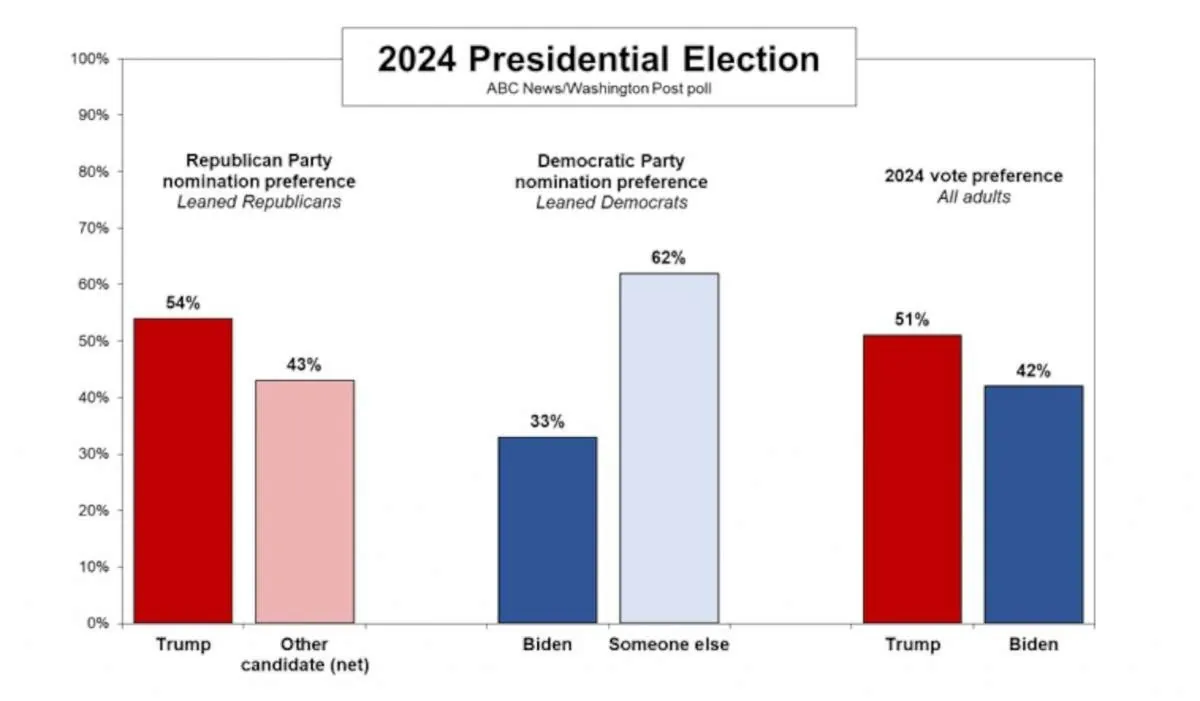The Washington Post has developed a distinctive approach to tracking the 2024 presidential election, emphasizing quality and caution in its polling methodology. This method differs significantly from other media organizations, providing a unique perspective on the current state of the race between Vice President Kamala Harris and former President Donald Trump.
The Post's polling average currently indicates a narrow lead for Harris in the national popular vote, with a two-percentage-point advantage. In crucial swing states, Harris appears to be ahead in Pennsylvania, Michigan, and Wisconsin, while Trump leads in Arizona and Georgia. North Carolina and Nevada remain virtually tied, highlighting the competitive nature of the election just 33 days before voters head to the polls on November 5, 2024.
One of the key features of the Post's methodology is its exclusive use of high-quality polls. This approach, rooted in the history of scientific polling that began with the first such survey in 1824 by The Harrisburg Pennsylvanian, aims to provide the most accurate representation of public opinion. The Post only includes transparent polls that employ methods proven to be accurate, excluding partisan polls or those released by candidates and campaigns.
The Post's polling team evaluates various survey methods, considering factors such as sample size and respondent contacting methods. This careful selection process is reminiscent of the improvements made in polling methodology following the infamous Literary Digest poll failure in 1936, which led to significant advancements in the field.
Another distinguishing characteristic of the Post's model is its cautious approach to change. The model is designed to react slowly to new polls, avoiding overreaction to minor shifts that may not reflect actual changes in the race. This methodology is particularly relevant in the context of the "shy voter" hypothesis, which suggests some voters may not reveal their true preferences in polls.
The Post's model also integrates state and national polling data, allowing for estimates in each state to adjust based on new polling information, even when that data comes from national or out-of-state races. This approach is particularly useful for states with fewer high-quality polls, such as Nevada, where the model relies on changes in the national environment and polls from demographically similar states like Arizona.
It's important to note that the Post's polling average is not a forecast but rather an estimate of the current state of public opinion. This distinction is crucial, as polls are snapshots in time and cannot account for future events that may influence the election outcome. This approach aligns with the criticism of "horse race journalism," which focuses excessively on polling rather than policy issues.
The Post's methodology also considers the challenges posed by evolving communication technologies. For instance, the increase in cellphone-only households since the early 2000s has required pollsters to adapt their methods to ensure accurate representation of the electorate.
"We believe our approach is the best way of understanding the current state of the race. We include the highest quality and most trustworthy polls; we've designed our model to update carefully and deliberately; and we've made sure that we can always show the best and most up-to-date data across different states and the national environment."
As the election approaches, the Post's polling average continues to provide a measured and reliable snapshot of the presidential race, offering readers a unique perspective based on rigorous methodology and careful analysis.
